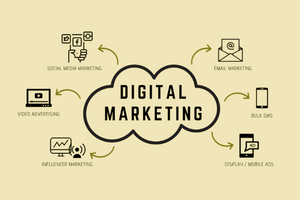The biggest worry about Google and Facebook is whether they can stay Google and Facebook. That is, can those two companies continue to dominate advertising.
It won’t be an easy task, especially for the relative elder statesman Google. But it should be feasible for Google to stay Google.
For a sense of the dominance of the two tech giants, consider their recent track record. Total worldwide spending on television and radio commercials, newspaper ads and other measured advertising grew by about $83 billion from 2012 to 2016, according to figures from Magna Global. Google and Facebook’s advertising revenue rose by a combined $58 billion over those years, which means the two companies were responsible for roughly 70% of all the growth in global advertising. Google’s ad revenue alone has been consistently equivalent to more than 40% of the annual growth in global advertising spending.
Google has proved adept at increasing the number of people using its internet products, boosting the supply of ads it sells and persuading people to click on those pitches. This is the holy trinity of digital advertising. Google’s ad sales have increased by 12% or more year-over-year for at least 18 consecutive quarters, including an 18.4% increase in ad revenue that Google parent company Alphabet Inc. reported Monday for the second quarter. That’s a remarkable string of growth for a company that has more yearly advertising revenue than the entire US television industry.
Companies almost have no choice but to advertise on Google search and other areas. If your products and services aren’t prominent in web searches, people won’t find you. And other Google digital hangouts, particularly YouTube, are too popular to ignore for companies that are eager to sell movie tickets, running shoes or auto insurance.
The big concern is Google can’t possibly keep it up. A big test for both Google and Facebook will come soon. Facebook has warned its revenue growth will slow considerably beginning later in 2017 because it can’t maintain the increase in the number ads it crams into its news feed. Google investors worry its ad machine will sputter a bit after it loses the lift from an extra ad spot it stuck at the top of some Google web searches conducted on smartphones and from changes it made to let advertisers isolate their marketing pitches to searches people do on their computers.
These might sound like arcane tweaks, but Google’s size means even small increases in the number of available advertising slots have a big financial impact. Research firm MoffettNathanson cited a source who estimated going from three to four ad slots on some smartphone web searches added about 1 percentage point to Google’s growth beginning a year ago.
Coming up with more places to stick ads starts to get difficult, though, and expectations are high. Cantor Fitzgerald forecasts Google’s advertising sales will reach $107 billion in 2018, or an increase of about $28 billion from 2016—roughly the size of Facebook’s total yearly ad revenue. If Google just maintains its recent share of 44% of all the growth in global advertising spending, that would mean only about $18 billion in new advertising revenue from 2016 to 2018.
That means to maintain the growth trajectory expected by investors, Google has to increase its already dominant share of the advertising market. Google isn’t going to generate advertising from the fast-growing market in China, at least not soon. Like Facebook, then, Google needs to fuel growth by stealing advertising money that is going into television commercials, newspaper and magazine ads, billboards and digital ads sold by every other company. Google also needs to come up with new tricks for more ad slots. Google Maps is often cited as a target to load up with more ad supply.
None of this is easy. Google will need to keep delivering on that holy trinity of ad sales. Facebook will fight Google for every dollar in advertising. Amazon is becoming a formidable player in digital ad sales. The television networks won’t let Google steal their lunch money without a rumble. The company has to keep at bay furious regulators and advertisers worried about their customer pitches appearing next to objectionable YouTube videos.
The thing is, Google has for years faced doubts that it can’t possibly keep expanding its slice of the world’s advertising pie. All signs are Google is becoming more of a must-have for companies with products to sell. Keeping its perch at the top of the advertising roost is going to get harder, but Google can keep defying the odds.
